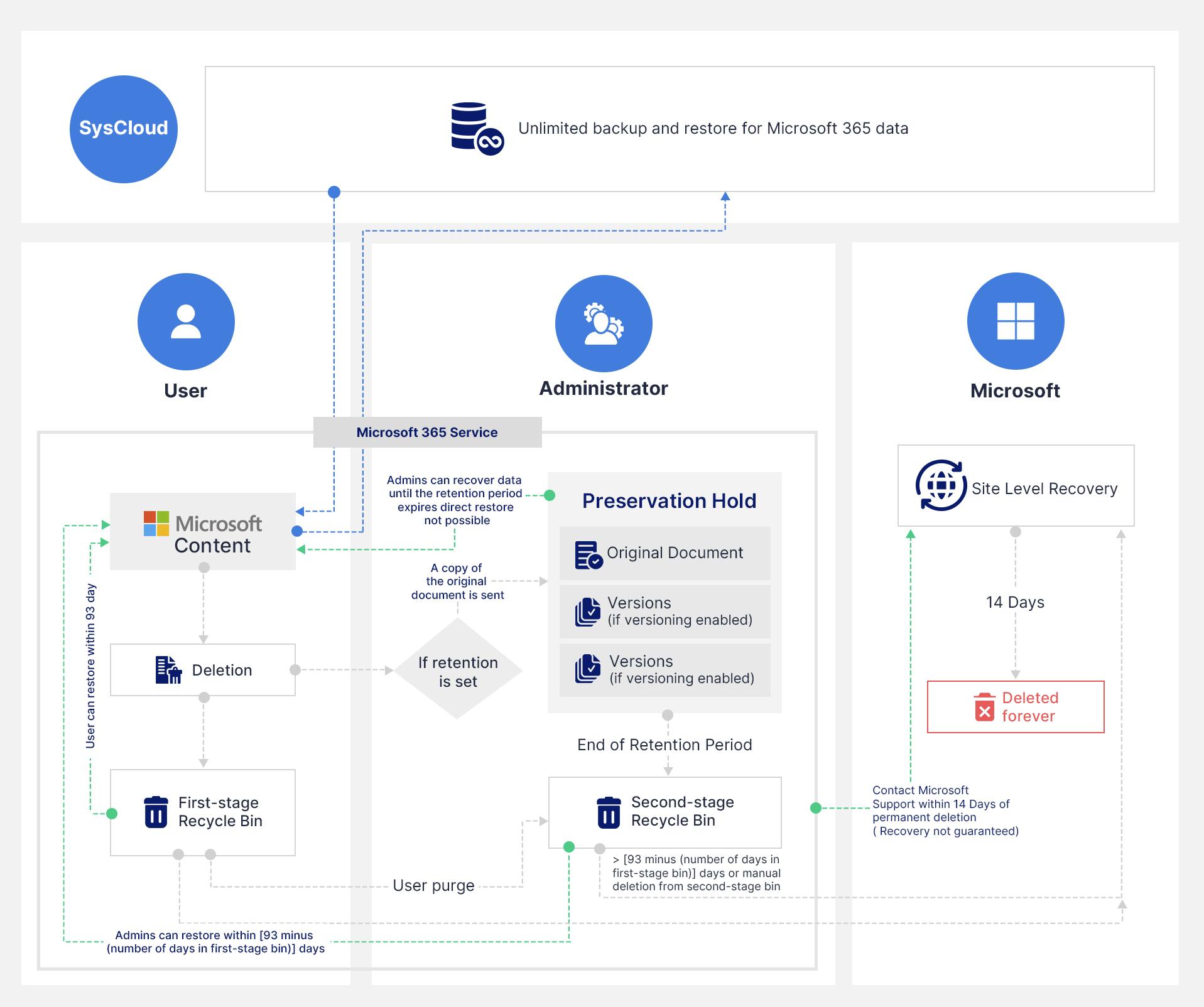Categories
In this article
- What is retention policy in Microsoft 365?
- Where can you apply retention policy to?
- What is eDiscovery in Microsoft?
- eDiscovery vs. retention policy
- What happens to data that gets deleted after applying retention policy?
eDiscovery vs. Retention Policy in Microsoft 365
17 Apr 2025
6 min read
Abhishek
Article at a glance
Microsoft 365’s eDiscovery and retention policies serve distinct but complementary purposes, and improper configuration can lead to data management challenges.
- eDiscovery is designed for legal and compliance investigations, not as a primary data recovery solution. It can retrieve preserved data but may miss crucial content if legal holds or retention policies are not properly applied.
- Retention policies can preserve content across a broad range of Microsoft 365 services but require careful configuration to ensure comprehensive coverage and minimize the risk of accidental data loss.
Read more
1. What is retention policy in Microsoft 365?
Retention policies can be set by administrators in the Microsoft Purview Compliance Portal. Policies can be tailored to retain content, delete content, or retain it for a defined period before deletion, and can be applied across a wide range of Microsoft 365 services.
1.1. Where can you apply retention policy to?
- Exchange Online mailboxes
- SharePoint Online sites
- OneDrive for Business accounts
- Microsoft 365 Groups
- Yammer (enterprise mode)
- Microsoft Teams (including channel messages, 1:1 and group chats, and shared files)
- Skype for Business messages
2. What is eDiscovery in Microsoft?
Microsoft 365 offers two levels of eDiscovery solutions—eDiscovery (Standard) and eDiscovery (Premium)—designed to support legal and compliance investigations by enabling organizations to identify, preserve, analyze, and export Electronically Stored Information (ESI).
These tools are accessible via the Microsoft Purview Compliance Portal and allow administrators to conduct keyword searches, apply filters, export data, and manage investigations across various Microsoft 365 services.
- Exchange Online mailboxes and public folders
- SharePoint Online sites
- OneDrive for Business
- Microsoft Teams (chats and channel messages)
- Yammer (enterprise mode)
To learn more about eDiscovery, click here.
3. eDiscovery vs. retention policy
The diagram below summarizes the basic differences between retention policy and eDiscovery in Microsoft 365.
The diagram below summarizes the basic differences between retention policy and eDiscovery in Microsoft 365.

3. 1. eDiscovery vs. retention policy: comparison table
| eDiscovery and Legal hold | Retention policy | ||
|---|---|---|---|
Types | |||
Microsoft 365 offers two eDiscovery solutions:
| Retention policies can:
A single retention policy can do both retention and deletion. | ||
Use cases | |||
Used for legal or compliance investigations by preserving and exporting Electronically Stored Information (ESI) required in litigation or regulatory review. | Enables organizations to comply with regulations and internal policies, keeping important data while removing redundant or obsolete content. | ||
Services covered | |||
Content locations include:
| Retention policies apply to:
| ||
Show more | |||
4. What happens to the data that gets deleted after applying retention policy?
The diagram below illustrates the general lifecycle of deleted content in Microsoft 365 when a retention policy is in place. It shows how a file can pass through multiple recovery stages from deletion, through the Recycle Bin(s), to long-term retention mechanisms like the Preservation Hold Library, or a third-party backup solution like SysCloud.

The above illustration only represents the general workflow of a file that is deleted after applying the retention policy. SharePoint and Teams retention works a little differently.
Recommended content
15 Apr 2025
8 min read
15 Apr 2025
4 min read
15 Apr 2025
5 min read
28 Mar 2025
12 min read
Get actionable SaaS administration insights
We don’t spam. Unsubscribe anytime.
In this article
- What is retention policy in Microsoft 365?
- Where can you apply retention policy to?
- What is eDiscovery in Microsoft?
- eDiscovery vs. retention policy
- What happens to data that gets deleted after applying retention policy?

